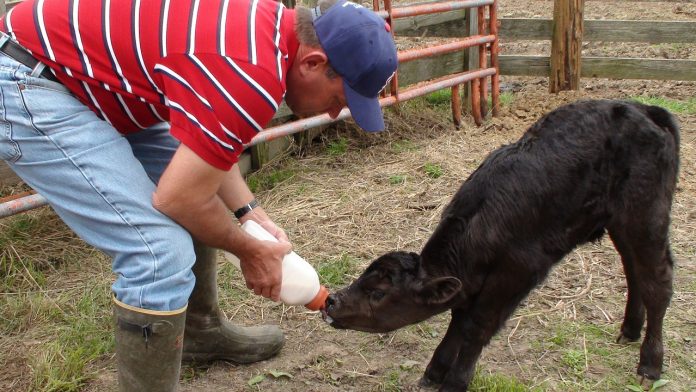As we enter the season when many families are calling our dairies to find junior fair dairy beef feeder calves for 4-H projects, it is our responsibility to protect the calves’ welfare by ensuring that the calves are healthy when they leave the farm and that we take the time to teach the kids and their families how to care for a young calf.
It used to really bug me when kids thought they needed 2 extra calves for the fair because they usually lost one or two. Fortunately, an increased focus on bull calf health has helped to alleviate the problem, but it can still be an issue.
Quality
In reality, we need to make sure all bull calves leave healthy and are set up to be successful to feedlot operators.
Bull calf prices have dropped over $300 per head in the last year at sale barns, but some producers who sell calves directly have not seen as steep of a drop.
Beyond finding someone who is willing to pay a premium for healthier calves, you have to make sure you’re consistently selling high quality calves.
In order to do this, we need to treat each calf with the utmost care. While calf gender is often of interest at birth, high quality care for all is the most important thing.
Care
This starts by moving the bull calves into clean, disinfected pens shortly after birth and making sure their first meal is clean colostrum and not manure or a manure/colostrum mix from suckling on the cow.
All Holstein or large frame calves should receive four quarts of high quality colostrum within four hours of birth. If the calf won’t drink four quarts, it can either be fed with an esophageal feeder or fed over separate feedings within six hours.
While measuring blood immunoglobulin level to determine passive transfer of immunity isn’t possible for every calf, it’s correlated to feed to gain ratios for early calf growth.
If blood Ig, immunoglobulin, levels are 0 g/L, feed/gain is 1.97, which improves to 1.81 feed/gain when Ig levels reach 5-15g/L. When Ig levels increase to over 15 g/L, feed/gain improves even more to 1.67.
Higher blood Ig levels are directly related to the amount and quality of colostrum that is fed. Bull calves also need to receive the same vaccination protocol and naval dipping your heifers receive; however, be aware of any meat holds associated with products used in calves if you sell at an auction.
Regardless of age, animals passing through the sale ring need to be free of any drug residues.
Feeding system
After colostrum management, we move into which type of feeding system you will use: traditional feeding of 4 quarts per day of 20:20 milk replacer over two feedings or accelerated systems feeding a 26-28 percent protein: 20 percent fat milk replacer equaling 6 plus quarts of milk a day fed in two or three feedings.
Many dairy producers have moved to the intensified system for their heifer calves and could see similar growth and health benefits in the bull calves.
If you are feeding bull calves on an intensified system, though, it will be important to let your buyer (especially 4-H families, who only raise a couple calves a year) know so that they keep them on that system to see the benefits and lower mortality.
It is also important that they gradually decrease the amount of milk fed when weaning these calves, so that they increase starter intake during the weaning process.
If not weaned properly, these calves may slowdown in growth during weaning, potentially losing the benefits from the intensified feeding system.
No matter which feeding program you go with, it’s important that the bull calves also receive water and starter within the first three days, just like your heifers, to increase calf growth and health.
Stress
Caution must also be taken to keep stress levels low during the first month, including transportation stress if sold during this time.
Helping get 4-H calves off to a healthy start begins at the dairy. Work with the youth that buy your calves to help them and their calf thrive.













